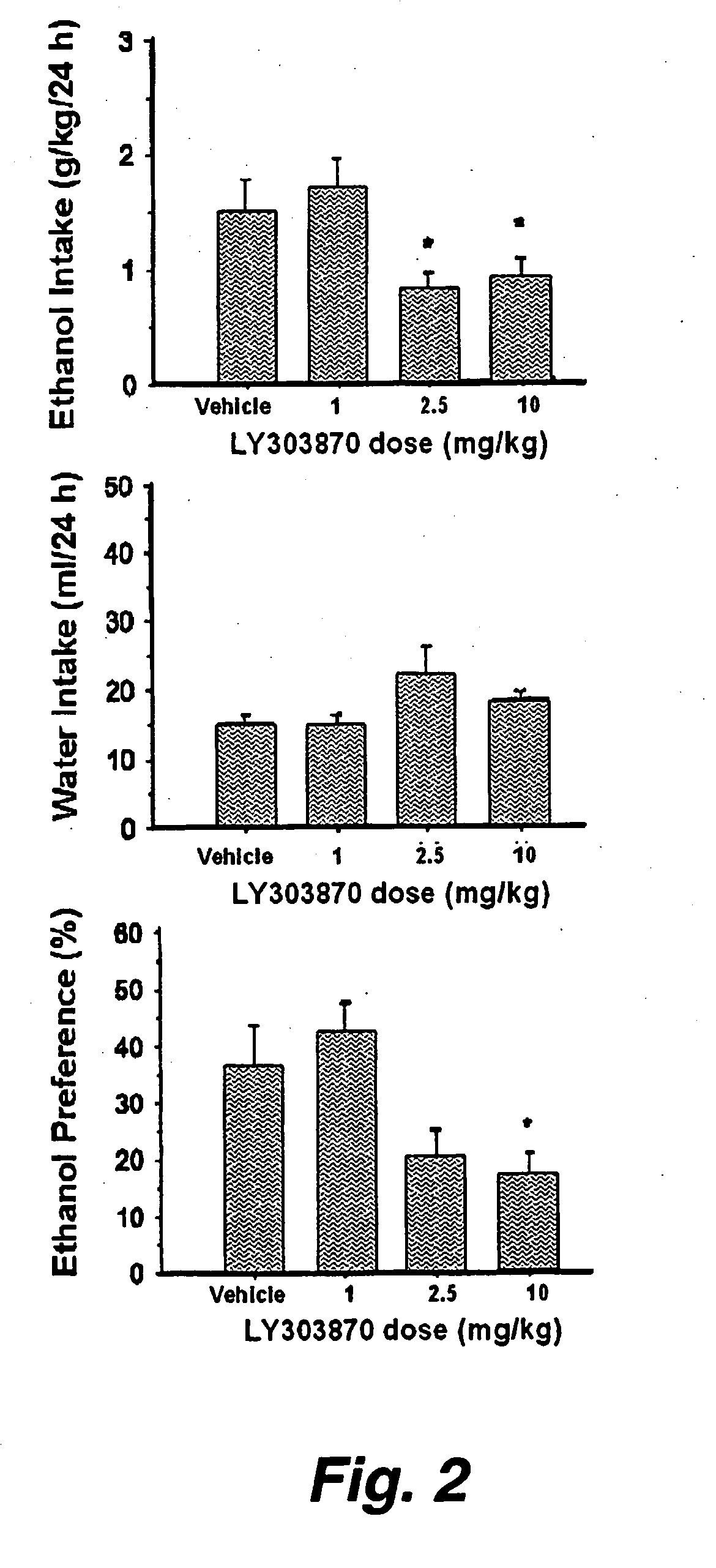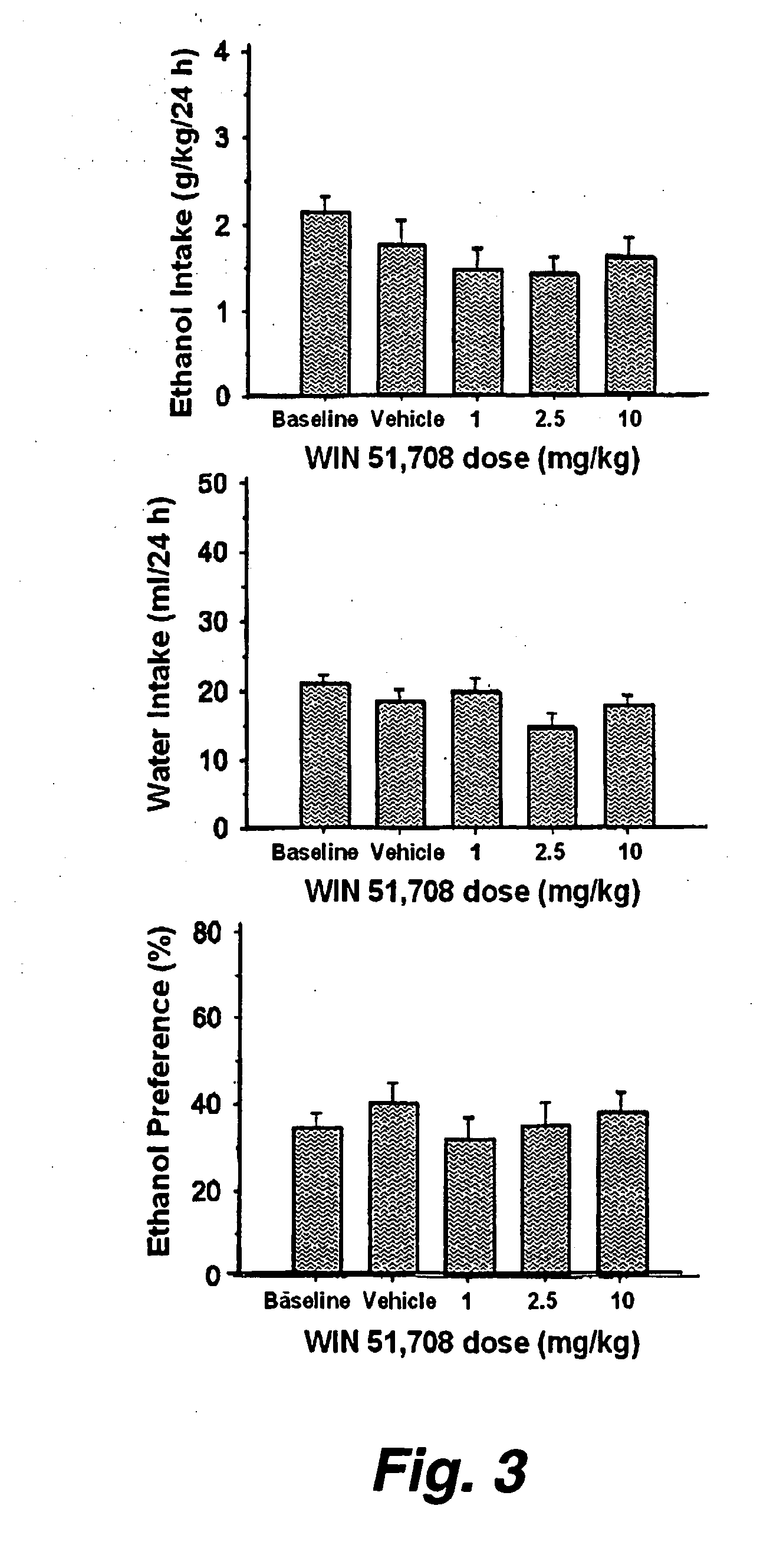Antagonizing nk-1 receptors inhibits consumption of substances of abuse
a technology of nk-1 receptor and nk-1 agonist, which is applied in the field of neurobiology and behavior, can solve the problems of serious public health problems, high cost of alcohol dependence and abuse, and chronic consumption of substances of abuse, and achieve the effect of reducing or blocking activity
- Summary
- Abstract
- Description
- Claims
- Application Information
AI Technical Summary
Benefits of technology
Problems solved by technology
Method used
Image
Examples
example 1
[0059]FIG. 1 shows the loss of righting reflex, a measure of intoxication. Ly303870 reduced the time the test animals were “drunk” when they were given 3 g / kg of ethanol.
[0060]FIG. 2 illustrates the effect of administration of the NK1 receptor antagonist LY303870 on self-administration of alcohol by a rat. Concentrations of 2.5 mg / kg or greater resulted in a significant reduction in self-administration of ethanol. In addition, the data show a reduced preference for ethanol as compared to water in the treated animals indicating that reduced ethanol consumption did not simply reflect reduced drinking behavior.
[0061]FIG. 3 shows that WIN 51,708 did not have a significant effect on ethanol consumption and did not alter preference. Without being bound to a particular theory, it is believed that this effect may be due to failure of WIN 51,708 to cross the blood-brain barrier.
PUM
| Property | Measurement | Unit |
|---|---|---|
| Dimensionless property | aaaaa | aaaaa |
| Concentration | aaaaa | aaaaa |
| Antagonistic activity | aaaaa | aaaaa |
Abstract
Description
Claims
Application Information
 Login to View More
Login to View More - R&D
- Intellectual Property
- Life Sciences
- Materials
- Tech Scout
- Unparalleled Data Quality
- Higher Quality Content
- 60% Fewer Hallucinations
Browse by: Latest US Patents, China's latest patents, Technical Efficacy Thesaurus, Application Domain, Technology Topic, Popular Technical Reports.
© 2025 PatSnap. All rights reserved.Legal|Privacy policy|Modern Slavery Act Transparency Statement|Sitemap|About US| Contact US: help@patsnap.com



